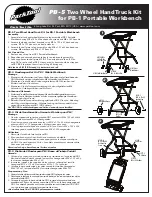
Made in
Germany
EN
12
SON hub dynamo: Crimp one connection
cable each – shortened if necessary – to-
gether with one headlight cable into a flat
connector (Ill. 4). For insulation, shrink one
of the included tubes around the connec-
tors, e.g. with
a lighter flame.
Hook the flat
connector up
to the SON
hub dynamo.
Please mind
the polarity of
the headlight,
the E-WERK
has no set
polarity.
Other dynamos, also side runners:
Connect the cable of the E-WERK together
with the headlight cable (parallel connection).
Other power sources (e.g. E-Bike/car):
The E-WERK (input) can also take continuous
current up to 50 V. Therefore, you can also
use E-Bike batteries or car cigarette lighters
(12 V) as power sources.
Connecting electronic devices and
batteries
Connect devices to the output (OUT) of the
E-WERK
Connection options:
1 cable, circular plug to USB socket (7)
1 cable, USB plug to Mini-USB plug (8)
1 cable, USB plug to Micro-USB plug (9)
1 cable, circular plug to Mini-USB plug (15)
1 cable, circular plug to Micro-USB-plug (16)
If this direct connection (15,16) does not
work, please use the cable with the USB
Markings between the numbered values are
steps for intermediate values:
3.5 V = marking between 2.8 V and 4.2 V
4.9 V = marking between 4.2 V and 5.6 V etc.
0.1 A = marking between 0 A and 0.2 A
0.3 A = marking between 0.2 A and 0.4 A etc.
CAUTION: Marking between highest and
lowest numbered value is the respectively
highest value:
13.3 V = marking between 12.6 V and 2.8 V
1.5 A = marking between 1.4 A and 0 A
Since the control dials can be switched
seamlessly between the maximum and
minimum values, please watch out as not to
choose a wrong (too high!) value.
Only if dynamos without inte-
grated electronic overvoltage
protection are used (without
the adjacent symbol), the
E-WERK can give of the
highest possible amount of energy.
socket (7) to create a functioning Mini- (8)
or Micro-USB connection (9).
2 cables (free ends) (10) (if the USB cables
do not fit the device to be connected, these
cables can be equipped with fitting plugs/
sockets – generally available in specialist
shops).
Please mind the polarity: plus = white cable;
minus = black cable.
CAUTION: The connections to the devices
are not splash or rain water proof.
Extension: The extension cable (6) can be
used to extend the connection to the dynamo/
power source or to the connected device.
Operation
CAUTION: Before connecting a device, al-
ways adjust voltage and current according
to the device’s needs (see box p. 13).
Adjusting with control dials on the E-WERK.
Use the special plastic pen (remove from the
bottom side of the E-WERK, hexagonal pen
2.5 mm). When reinserting into the bottom
holder, the pen should snap in audibly and
securely.
Output voltage: Adjustable from 2.8 V to
13.3 V – in steps of 0.7 V (this way, mobile
devices can be powered/charged that are
run by 1 to 3 serial Li cells or 2 to 9 serial
NiCd/NiMH cells). The integrated voltage
converter prevents the voltage created by
the hub dynamo (depending on speed) from
exceeding the set value.
Output current: Adjustable from 0.1 A to 1.5 A -
in steps of 0.1 A.
Ill. 4
Ill. 5: set values 4.9 V and 1 A
CAUTION: Too high voltage and/or cur-
rent can destroy the connected device.
When changing devices, the settings
must always be adjusted properly. Mind
the polarity of the output voltage when
using self tailored cables.
When powering a device, the output
voltage of the E-WERK is always to be
set to the value that is noted on the
input socket of the device, on the power
supply unit or in the instruction manual
of the device. This value is usually stated
in connection with one of the following
terms: secondary, SEC, output, OUT, or
similar. If this voltage value cannot be
set exactly, use the next lowest setting
to it. If a current value (Ampere) is
noted, the E-WERK should be set to the
next lowest possible value accordingly.
If no current value is stated, the current
can be determined if charging time and
battery capacity are known. For this
purpose, the battery capacity in ampere
hours is divided by the charging time
in hours.
An example: A battery with a stated
capacity of 3.2 Ah and a charging time
of 4 h necessitates the current of the E-
WERK to be set to 0.8 A [3.2 Ah / 4 h].
Settings for USB devices:
4.9 V / 0.5 A
Settings for cache battery 461A:
5.6 V / 1.5 A

































